Affiliate links on Android Authority may earn us a commission. Learn more.
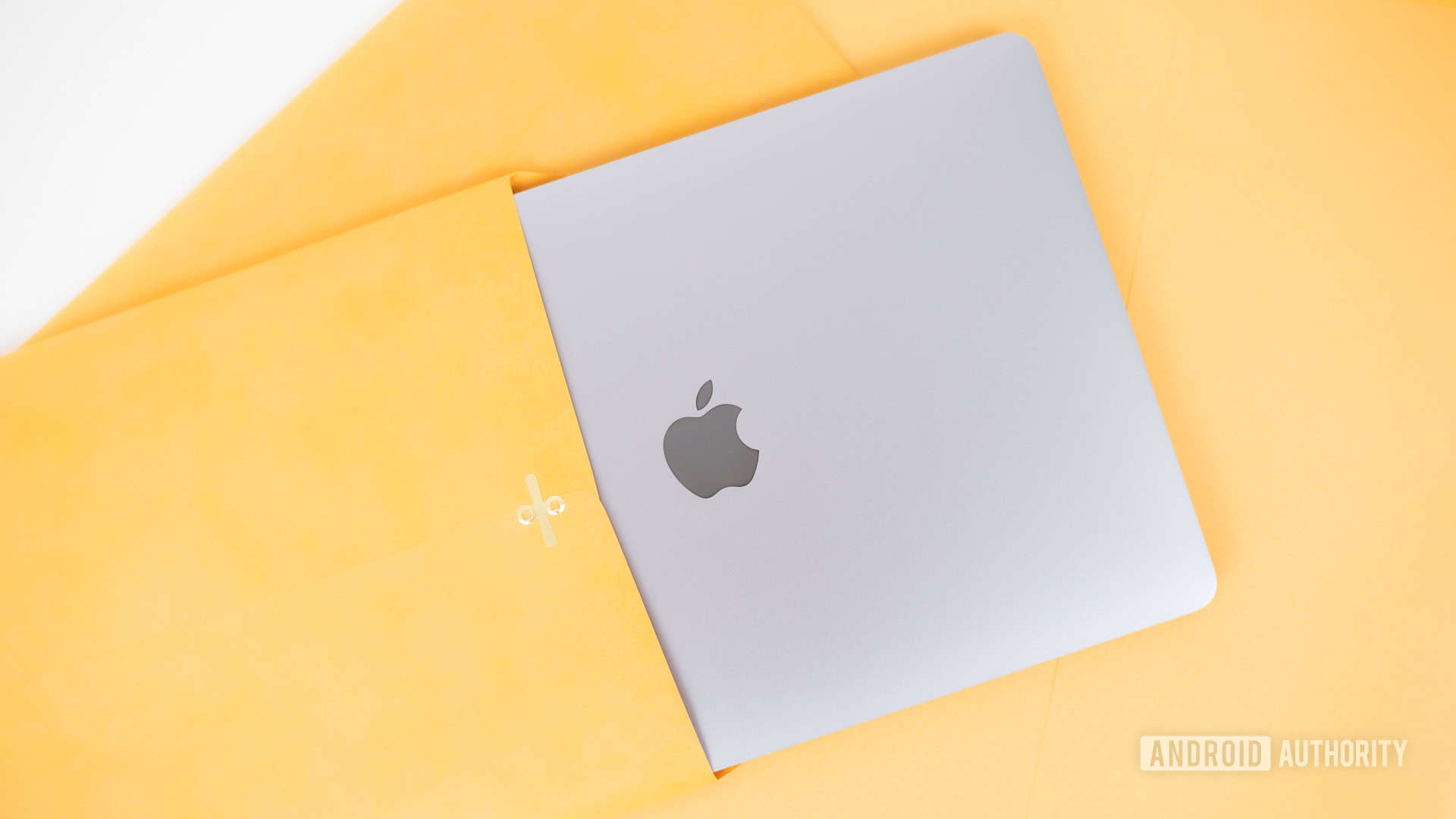
Apple MacBook Air
What we like
What we don't like
Apple MacBook Air
January 2008. Steve Jobs wouldn’t stop talking about an amazing computer, which he pulled out of a manila envelope. This was one of Apple’s most jaw-dropping unveilings. The first MacBook Air was a mere 19.3mm (0.76 inches) at its thickest point, something unheard of at the time. Its all-aluminum body made for a timeless design that even modern iterations continue to imitate — and it lives on in the 2020 MacBook Air.
Times have changed and the MacBook Air has plenty of competition. Laptops get more powerful, thinner, and better built every year. Then there are tablets, which are more portable, cheaper, and sometimes perform better than laptop computers. In fact, many argue the similarly-priced iPad Pro can be a better computer than the MacBook Air. There’s also the new MacBook Air laptops powered by Apple’s own M1 silicon to consider. Should you go for the new chips or stick with Intel MacBooks?
Competition is thriving. Is there still a market for the 2020 MacBook Air? Let’s dig into the nitty gritty.
Also read: Best Apple laptops for all types of users
2020 MacBook Air review: Who is it for?
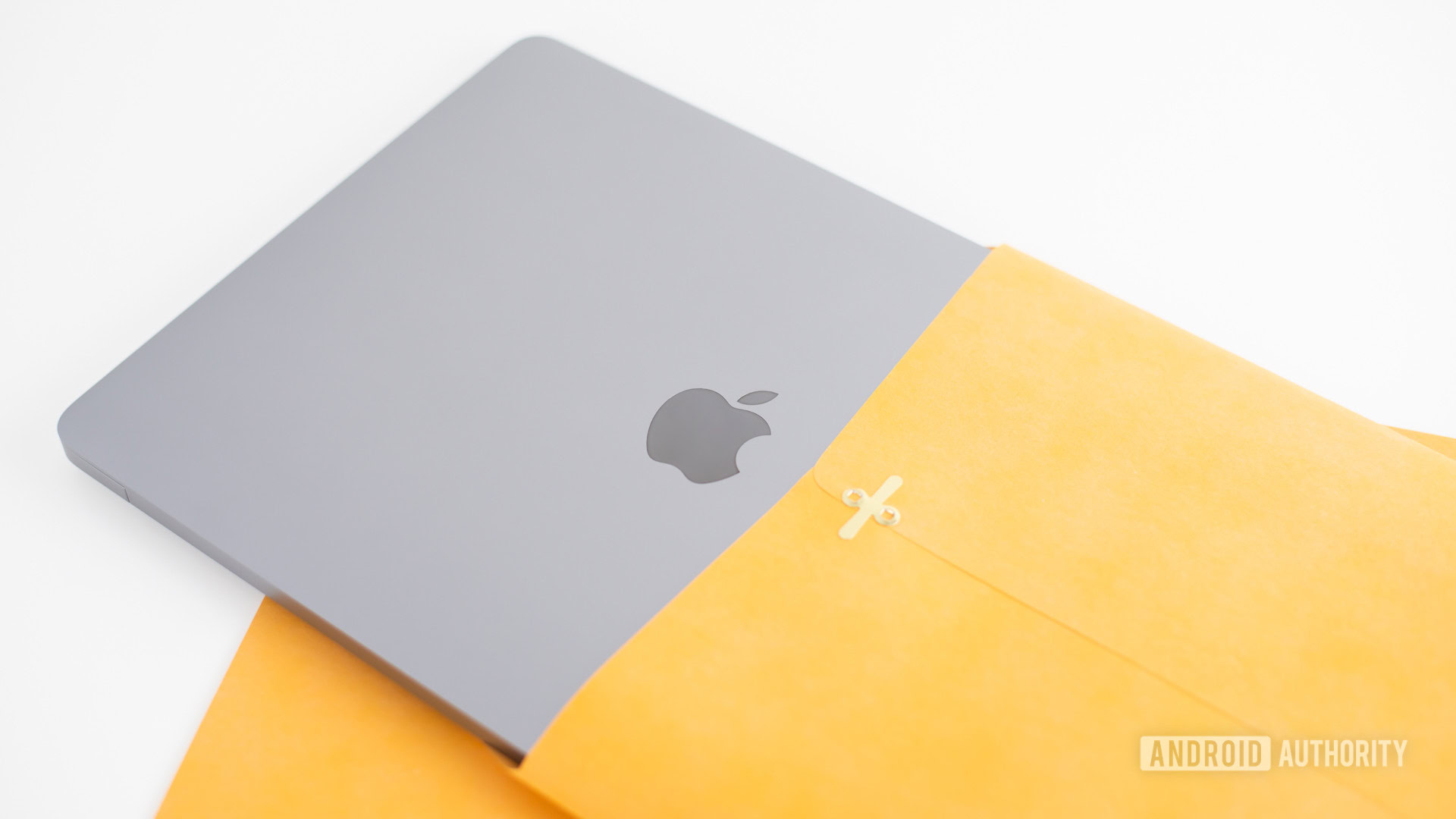
The Intel-based MacBook Air’s $999 starting price positions this laptop in a very competitive space. It goes against some capable machines, such as the ASUS Zephyrus, Microsoft Surface Laptop 3, and Dell XPS 13, as well as Apple’s own MacBook Air (M1).
At its base configuration the MacBook Air comes with a 10th generation Intel Core i3 processor, 8GB of RAM, and 256GB of internal storage. Many will argue competitors can sweep and mop the floors with the MacBook Air. And while this can be a valid argument, we must keep in mind Apple has a different business philosophy and target audience.
The average Joe who wants to type a document here and there could get other affordable laptops and Chromebooks for very casual use. The MacBook Air is for students, moms, dads, and other general users who are more demanding in their computing needs.
The simplest way to put it is that a MacBook Air would be best for heavy users who don’t necessarily need too much power. This could include anyone who spends enough time working from a computer to justify paying a premium for an overall better experience.
Great reads: Best gaming laptops | The best Microsoft Surface devices
Design: The MacBook Air’s biggest strength
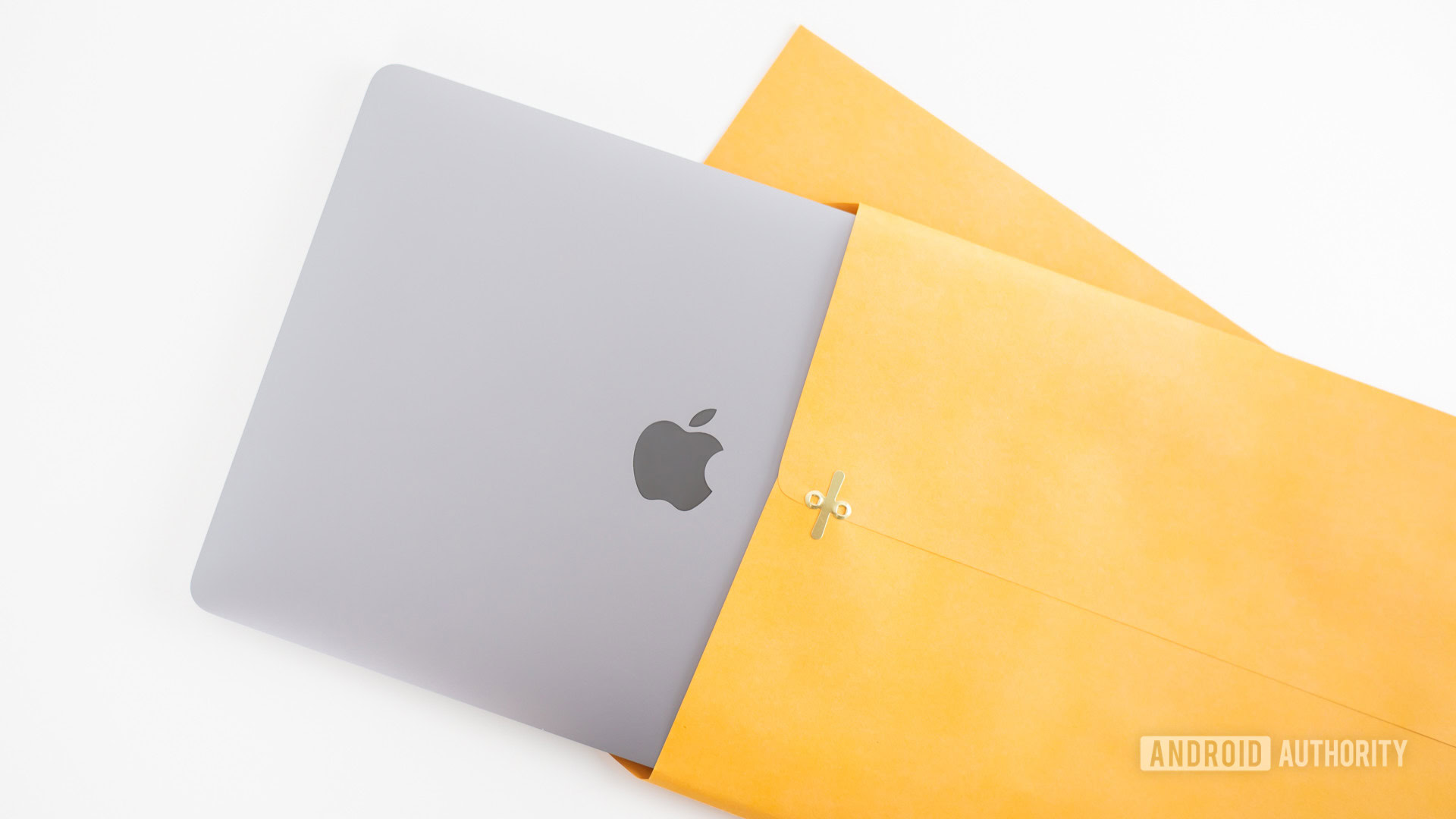
- 11.97 x 8.36 x 0.16–0.63 inches
- 1.27kg (2.8lbs)
- Two Thunderbolt 3 USB Type-C ports
- 3.5mm headset jack
- Solid aluminum body
- Large glass trackpad
- Improved Magic Keyboard with Touch ID
The 2020 MacBook Air looks nearly identical to all previous MacBook Airs, but it’s a good thing Apple took the “if it ain’t broke don’t fix it” approach. That’s because design is what mostly differentiates it from the competition. The MacBook Air’s iconic design stands the test of time, and competitors find it worthy of imitation.
That bod!
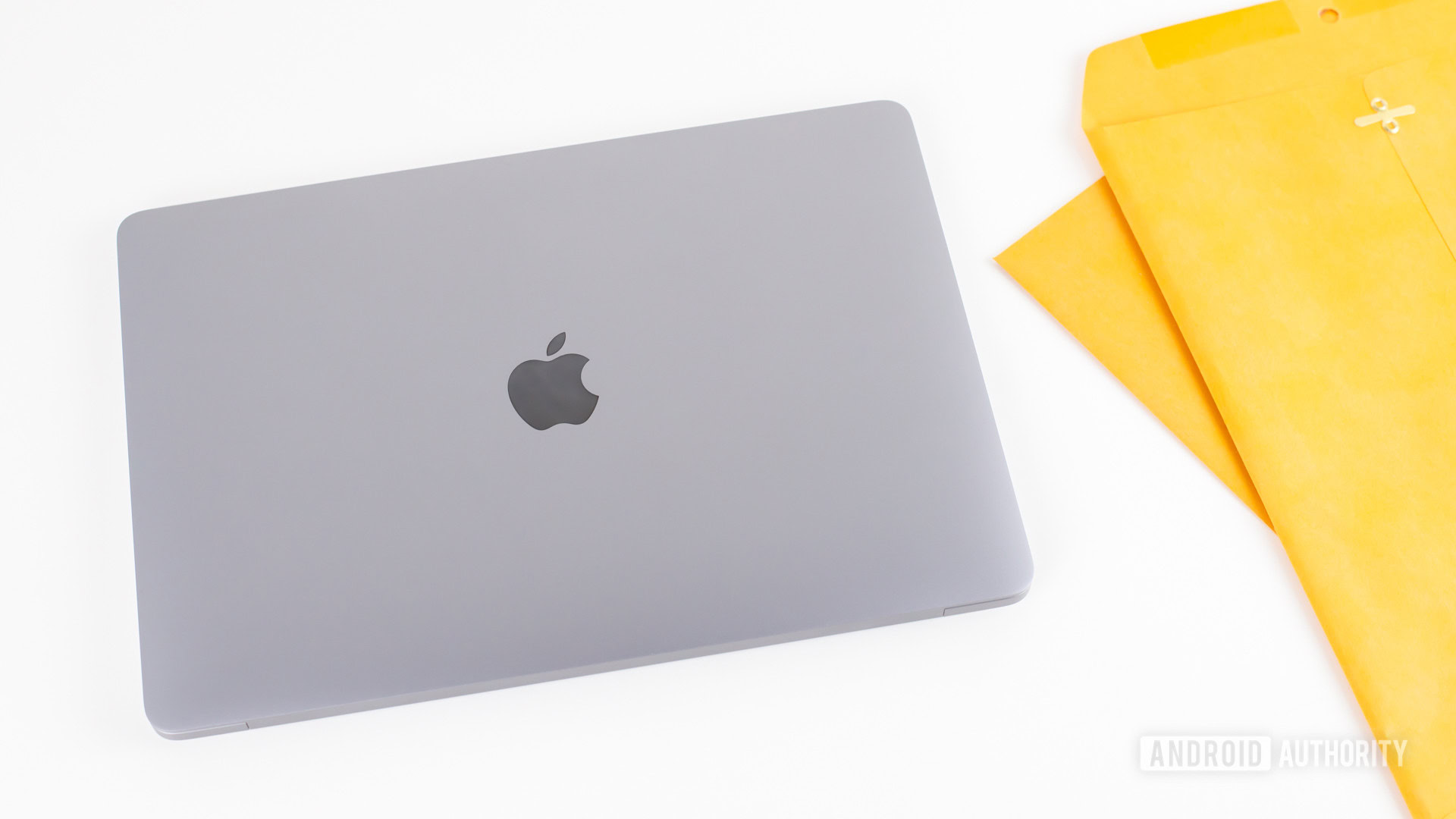
The aluminum unibody is solid and offers a premium feel that can’t be matched by plastic. While it can catch some smudges, it’s less of a fingerprint magnet thanks to the brushed texture.
The screen’s hinge has good resistance, though it can’t be lifted without holding the bottom part. Build quality is outstanding. And while I miss the light-up Apple logo, it’s a gimmick we can live without. Some might even prefer the more minimalist mirrored emblem.
The MacBook Air's iconic design stands the test of time, and competitors find it worthy of imitation.Edgar Cervantes
MacBook Air keyboard and trackpad
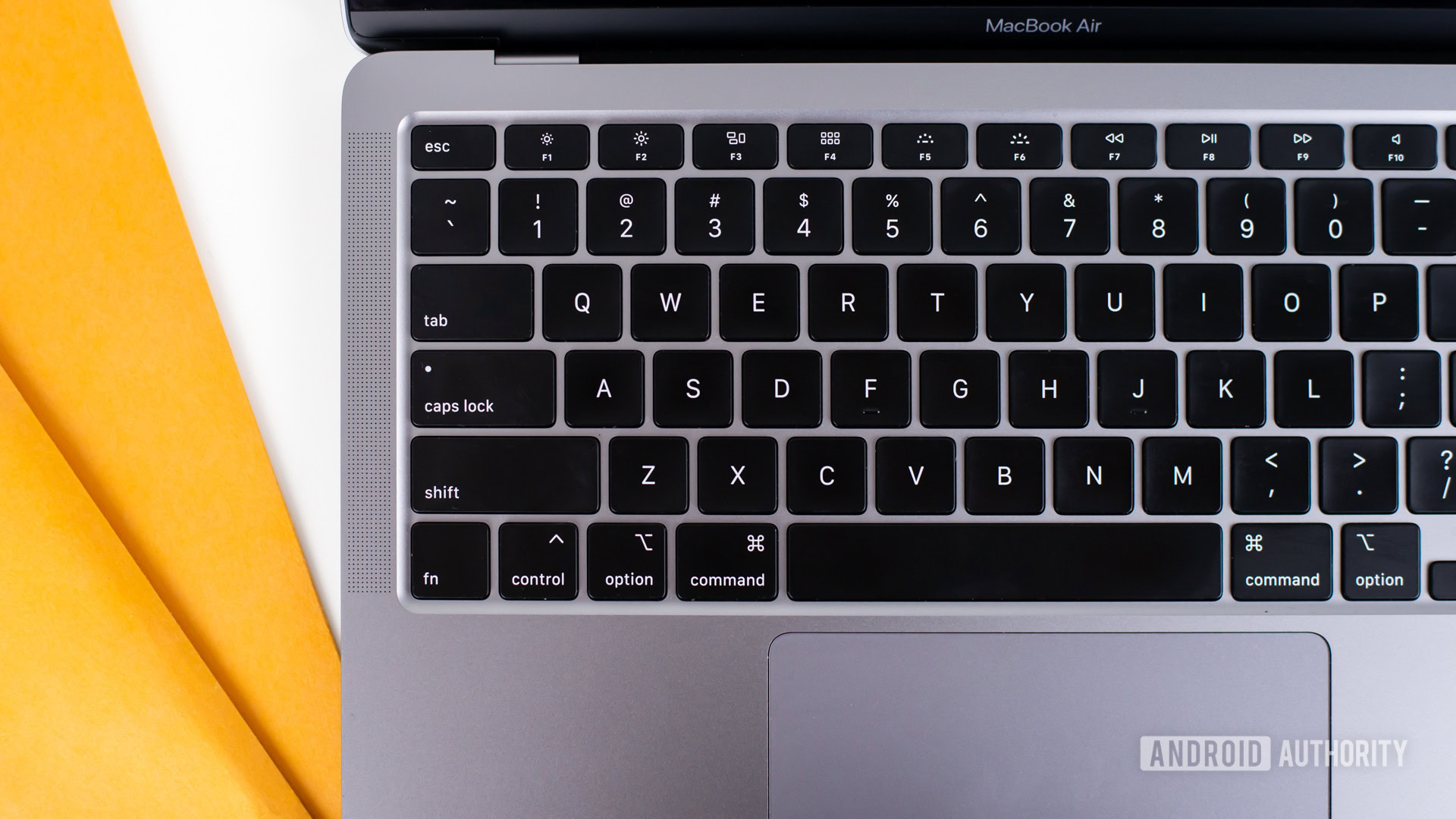
Once opened we are presented with the iconic back-lit Apple keyboard. Only this time it’s better than the previous generation MacBook Air, which had the much abhorred butterfly keys. The new “Magic Keyboard” features scissor switches and 1mm of key travel. It may not sound like much, but the difference in feedback and typing experience is immense. I can’t say this is the best laptop keyboard I’ve used, but it is much better than its predecessor, as well as many other laptops. It’s clicky, provides fair feedback, and the key spacing is very comfortable.
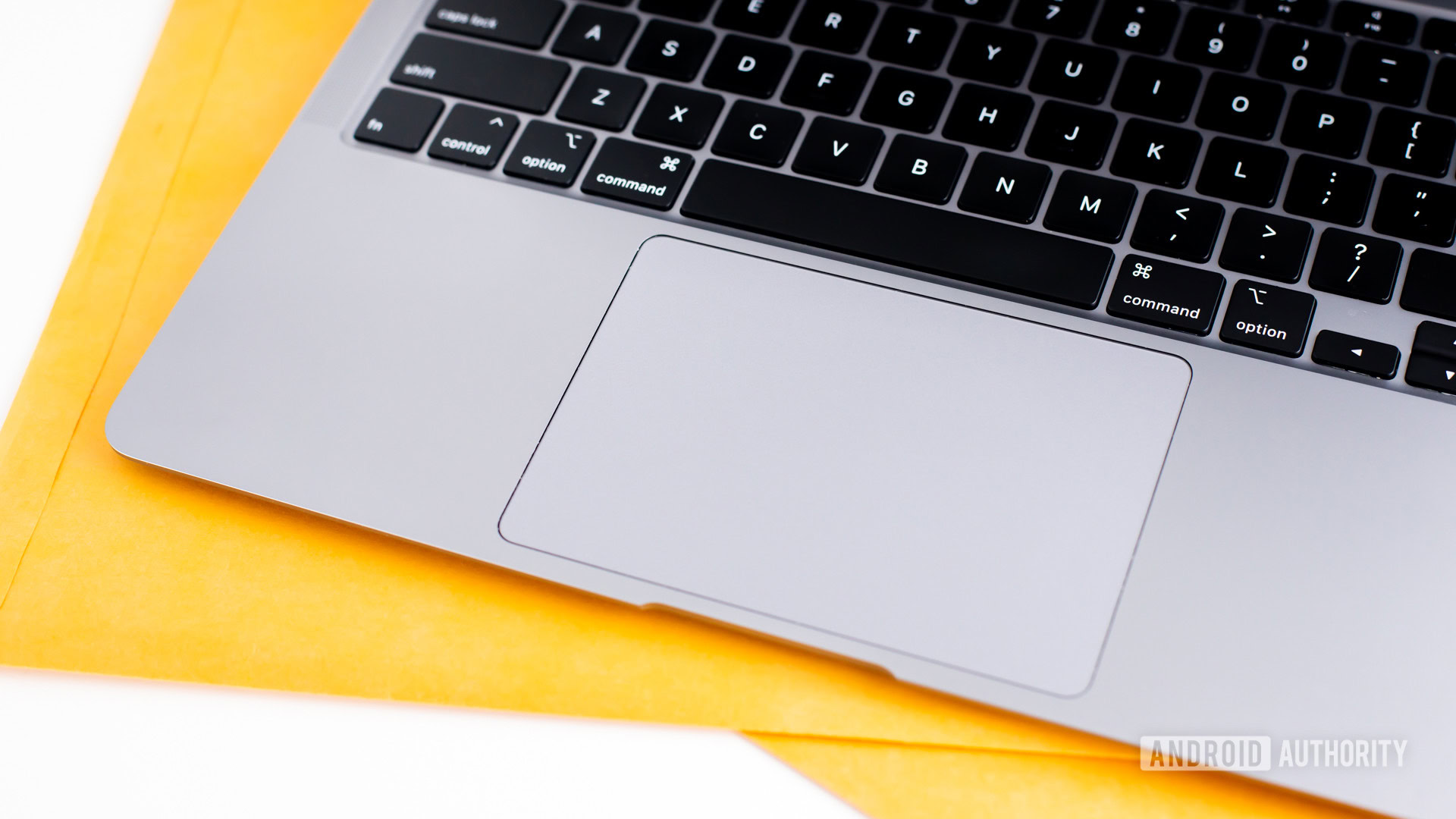
We can’t complain about the trackpad. The glass surface is smooth, and large enough to navigate and take advantage of gestures comfortably. Other MacBooks have bigger trackpads, but they are also much bigger (and more expensive). The trackpad has no moving parts; instead, haptic feedback gives you the physical sense that a press has been performed. Apple calls this technology Force Touch and it feels as good as the real deal.
Also check out: Apple MacBook Pro (16-inch) long-term review: A true desktop replacement
Apple design vs the competition
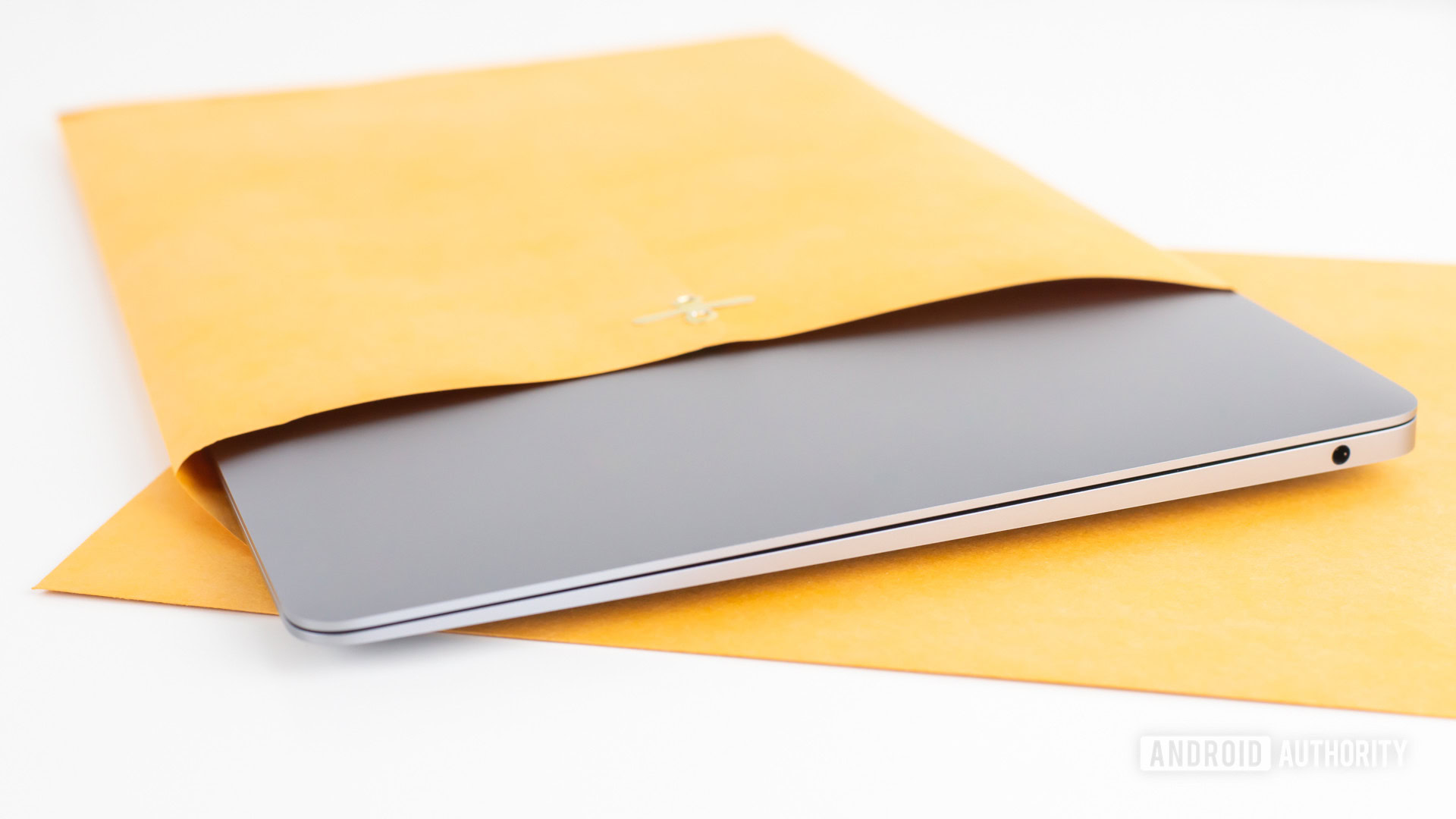
There is nothing like Apple design. I have used macOS, Windows, and Chrome OS computers extensively, across all price ranges. Some of them are outstanding, and often even better than the MacBook Air on which I’m typing this review. But I find that manufacturers always seem to miss something in the design department, no matter how cheap or expensive a computer is. If the keyboard is great, maybe the trackpad isn’t so much, or vice versa. Maybe the screen hinge is a little wobbly, or the materials feel cheap. There is always something to complain about, but with this MacBook Air everything is done at least at an acceptable level of quality, and in some design areas it excels.
I will complain about one thing, though.
Where are all my ports?!

I simply can’t understand why Apple is giving us only a couple of USB Type-C (Thunderbolt 3) ports and a lonely 3.5mm headset jack. The thinness and super packed internals argument simply doesn’t convince me. Even the 16-inch MacBook Pro has four USB Type-C ports, and a single 3.5mm headset jack.
Read: What is USB Type-C?
Some older versions of the 13-inch MacBook Air have plenty of ports, something even the high-end MacBook Pros now lack. The 2017 MacBook Air had a MagSafe 2 power port, two full-size USB 3.0 ports, a Thunderbolt 2 port, a 3.5mm headset jack, and an SD card reader. You mean to tell me even the SD card reader doesn’t fit in this one?
We are moving towards a USB Type-C only world, and this set-up would be great if all our accessories used USB Type-C, but the industry simply isn’t there yet. How many USB Type-C printers, mice, or keyboards have you seen? They aren’t many. We would appreciate it if Apple threw at least a single USB Type-A port and SD card reader in its laptops computers. I’m sick and tired of dongles.
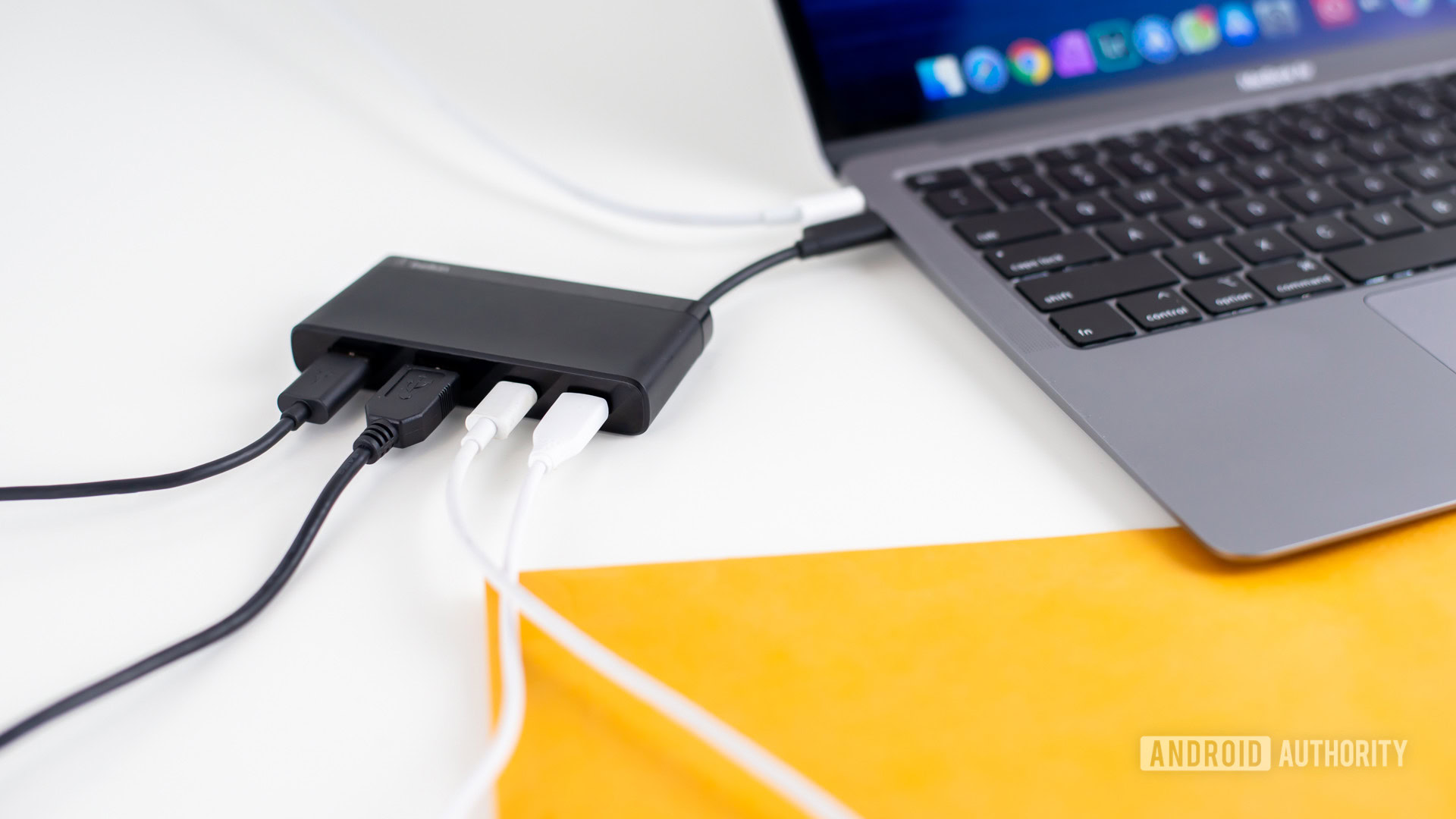
I'm sick and tired of dongles, yet Apple seems to be all about them.Edgar Cervantes
Ports are one reason I love Windows laptops. Even the thinnest ones offer more than just USB Type-C ports. Take the Surface Laptop 3 as an example: it has a USB Type-C, USB Type-A, headphone jack, and Surface Connector (for charging). More advanced laptops also have SD card readers, HDMI ports, Ethernet, and more. You need a USB Type-C adapter to get all these benefits on the MacBook Air.
More: The best USB Type-C adapters
What about the display?
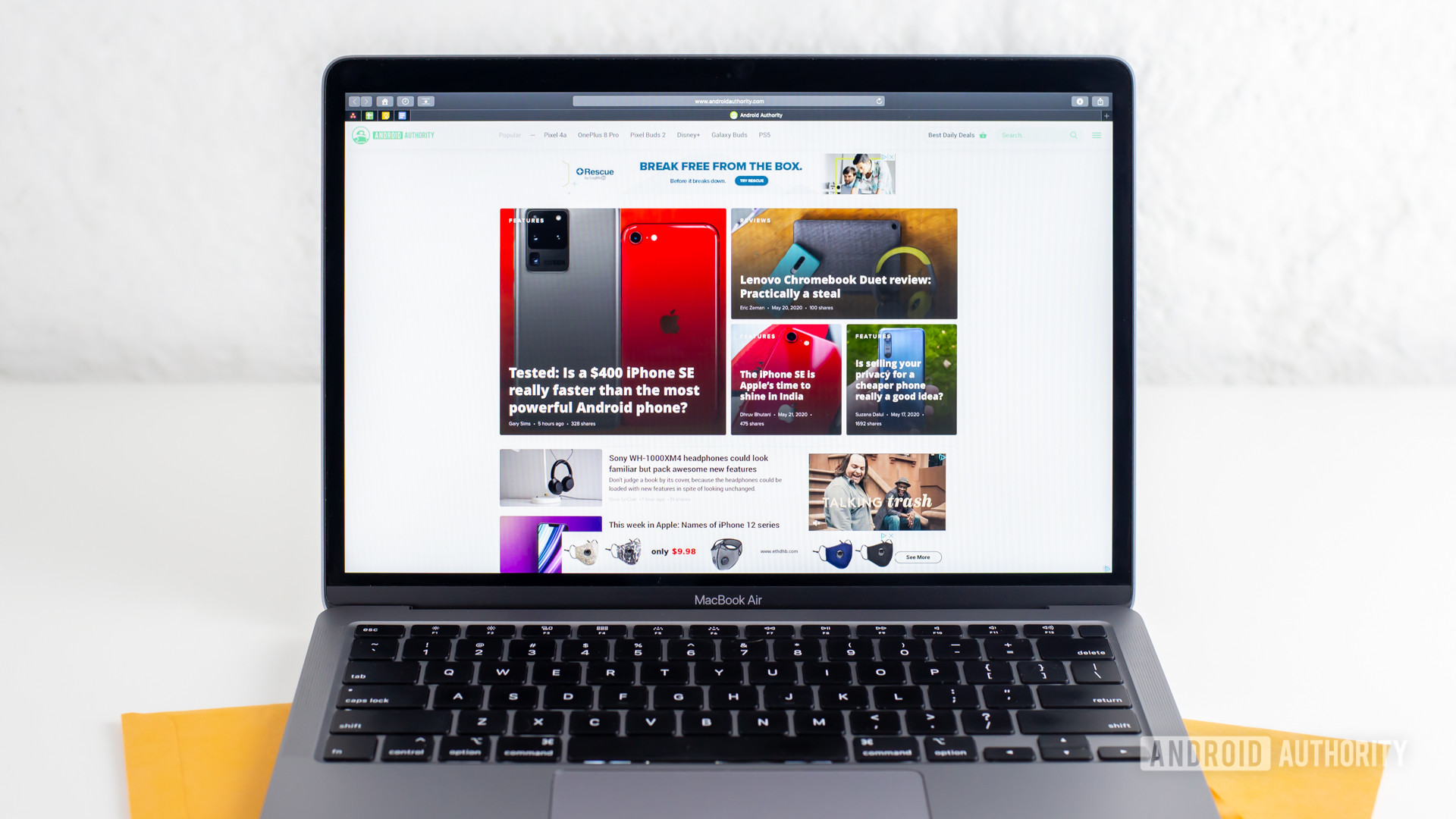
- 13.3-inch IPS LED display
- 2,560 x 1,600 pixels
- 227ppi
- 16:10 aspect ratio
- True Tone technology
Apple is often praised for its displays, but I will go against the current and tell you there are better options out there. Yes, the 2,560 x 1,600 resolution offers “Retina” quality, and everything is pretty sharp at 227 pixels per inch, but any display buff will tell you resolution is only one part of a good display.
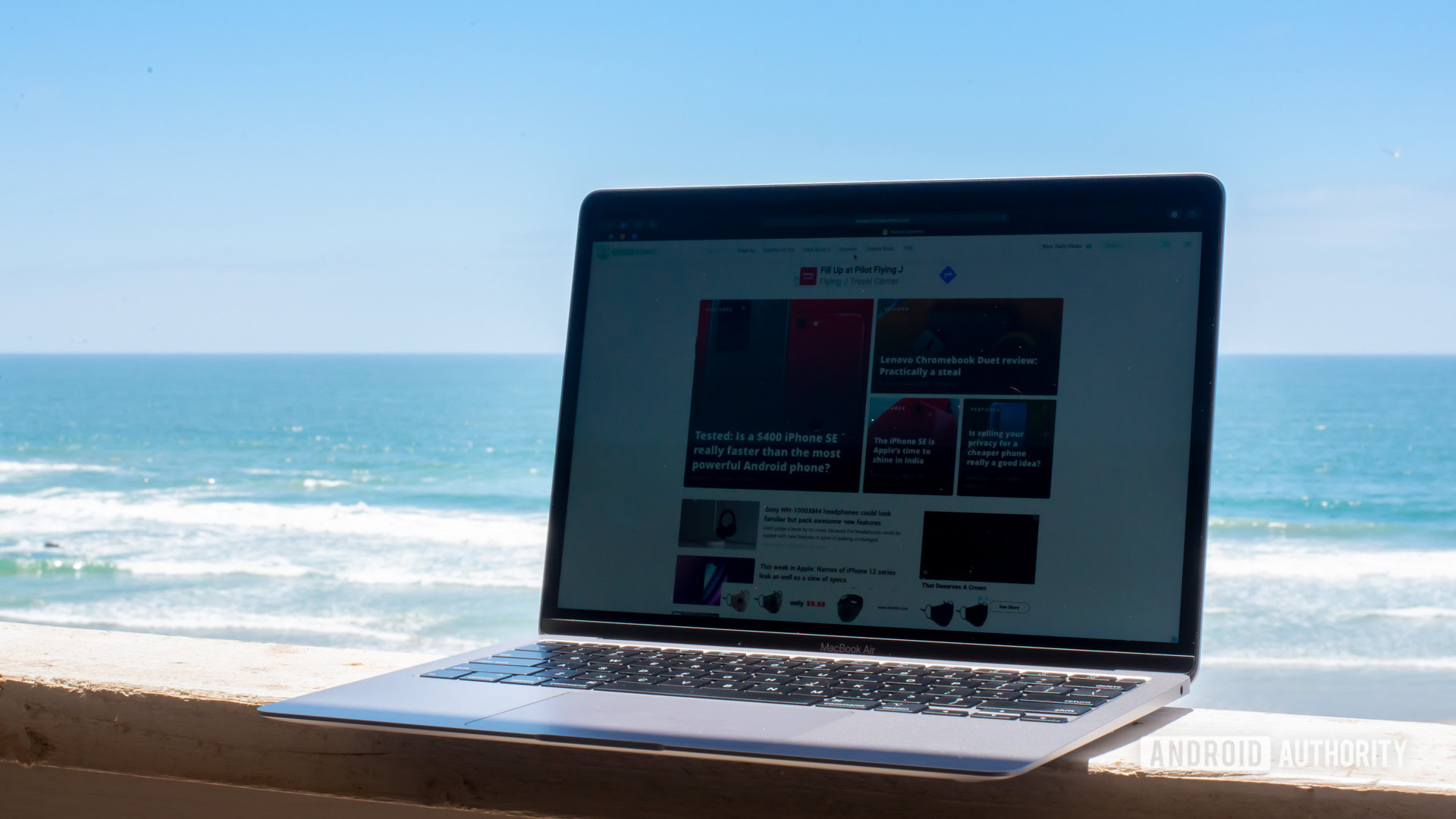
This 2020 MacBook Air display’s brightness tops off at about 400nits, which is good, but not outstanding by today’s standards. And as you can see in the image above, the screen is very hard to use outdoors. The 13-inch MacBook Pro offers 500nits of brightness, so does the Dell XPS 13. In terms of color accuracy the MacBook Air doesn’t reach the DCI-P3 wide color gamut, while the MacBook Pro 13 does. Some competitors surpass it. This means those who really care about color accuracy (e.g., photographers) may want to look elsewhere for something that gets closer to the DCI-P3 and Adobe RGB color spaces.
The MacBook Air screen is great, but I've seen plenty better.Edgar Cervantes
Razer offers 100% Adobe RGB color accuracy in some of its laptops. And I can definitely see the difference in color accuracy when I compare the 2020 MacBook Air with a 2016 Razer Blade Stealth, which has a 100% Adobe RGB screen. But of course, a wide color gamut isn’t exactly something the common MacBook Air user will care about.
Text looks sharp on the MacBook Air. Media plays beautifully, and brightness is sufficient when indoors. All in all, this screen is great, but I’ve seen plenty better.
Performance: How much is enough?
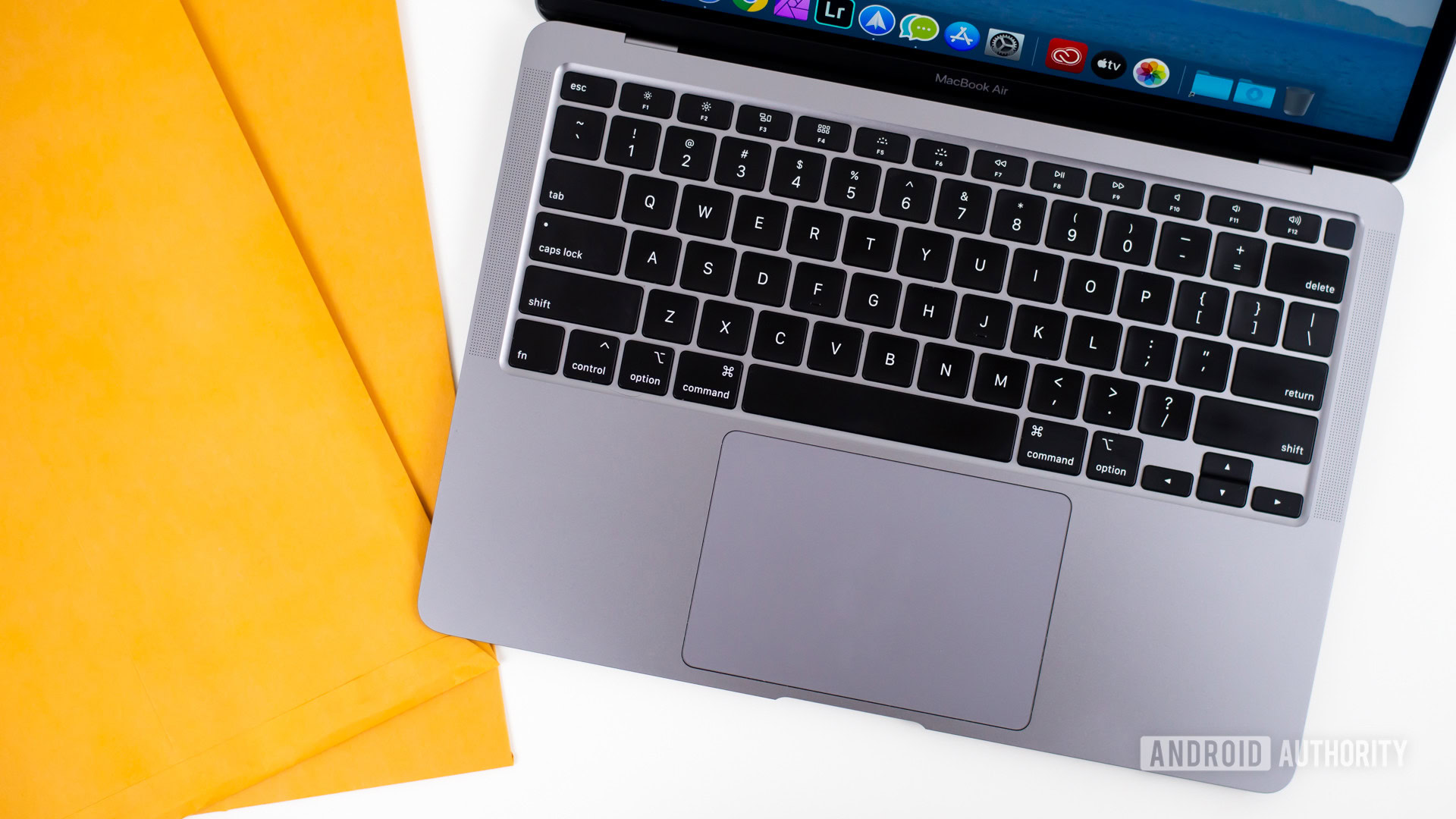
- 10th gen Intel Core i3 processor
- Intel Iris Plus GPU (eGPU support)
- 8GB LPDDR4X RAM
- 256GB PCIe SSD
I am a true advocate of the idea that most people buy more than they need. As a creative and photographer I’m often pushed to believe I need all these amazing specs that can cost a pretty penny. This was my chance to find out if I can live with less power.
The Intel Core i3 is considered a low-power processing unit, and professionals would often recommend upgrading to an i5 or i7. These will definitely improve performance if you can afford the upgrade, but whether you need it or not is to be debated. Geekbench benchmarks show the Intel Core i3 2020 MacBook Air scores better than the Core i5 2018 MacBook Air (1,004 vs 746). This means that if you could live with a previous generation MacBook Air using an i5, you will do better with the newer i3 MacBook Air.
But those are just numbers. What was the experience like? In short, it was good and bad. The longer answer is that I had to make some adjustments to make this “low-powered” MacBook Air handle my workload.
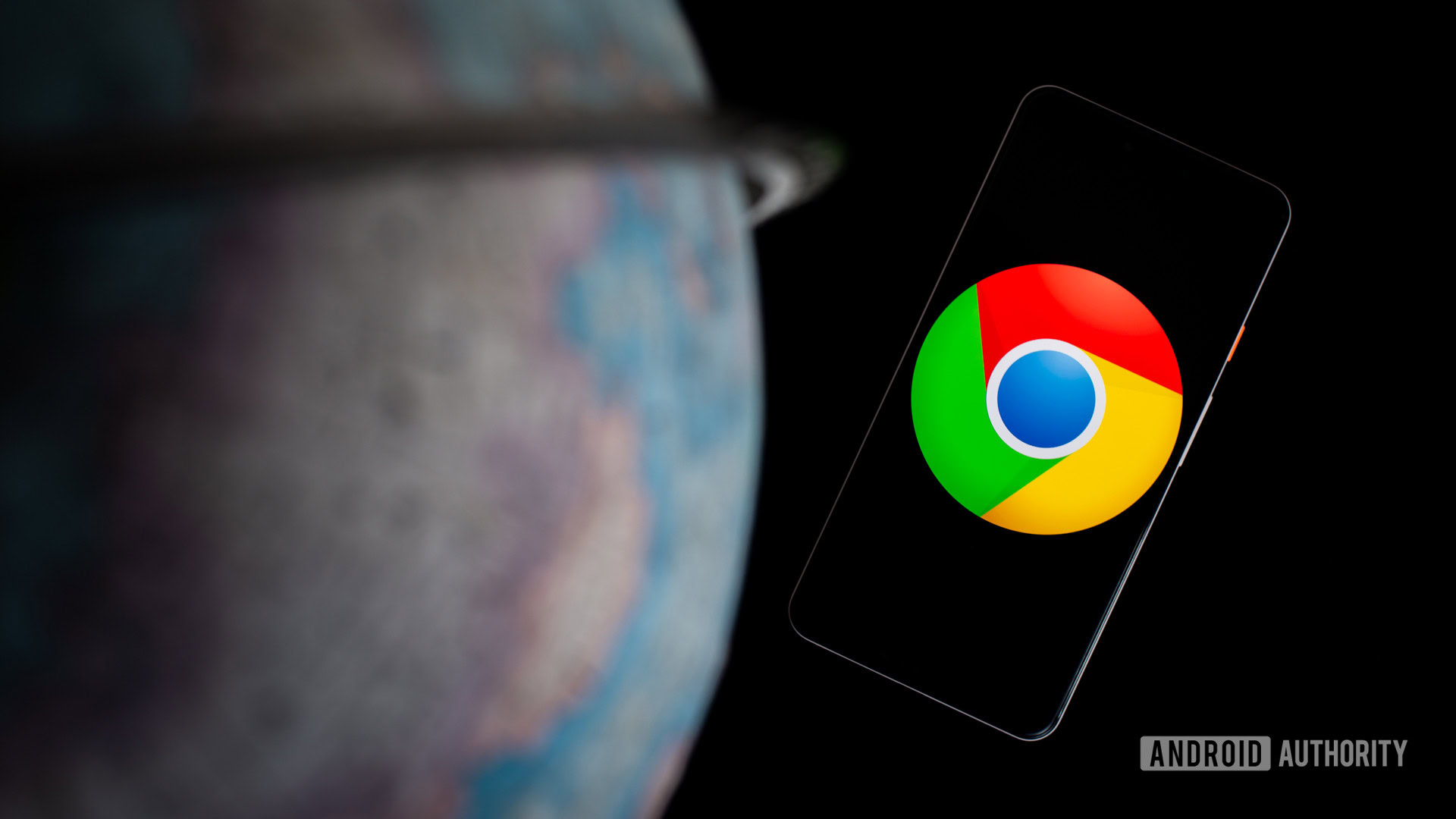
I bit the bullet and switched from Chrome to Safari. Now I can open upwards of 20 tabs without issue.Edgar Cervantes
General use was handled perfectly. I checked my emails, browsed the web with a few tabs open, Netflix and chilled, and checked social media like there was no tomorrow. Things change once you overload the computer a bit. For example, I found the laptop slowed down once I opened more than 10 tabs on Chrome. Safari is better optimized for macOS so I bit the bullet and switched. Problem solved! Now I can open upwards of 20 tabs without issue.
I usually have Safari (usually about 7-15 tabs), Spark (email), and All-In-One Messenger. Apps such as Lightroom and Affinity Photo (Photoshop alternative) are also part of my work routine. I use them to edit RAW photos that never weigh less than about 25MB, and often get to about 45MB. This can be a heavy load on many computers, and I’ve been slowed down even by Core i5 Windows laptops. Yet I encountered very few issues using either apps with this base 2020 MacBook Air.
The lack of performance is much more significant when editing video. Even with 1,080p footage the video preview can get choppy. It’s nothing that will stop you from creating a video every now and then, but performance is not optimal. This isn’t the right video-editing machine for a professional, hardcore YouTuber, or avid video enthusiast.
The MacBook Air isn't the right video-editing machine for a professional, hardcore YouTuber, or avid video enthusiast.Edgar Cervantes
The computer gets uncomfortably hot when using heavier apps and processes. It even gets a little warm when used casually for browsing. That’s something you’ll have to learn to live with if you want a computer as thin and portable as the MacBook Air.
As a professional photographer this laptop can handle what I usually throw at my computers.
Of course, the caveat to all of this is that you can now get an M1-powered MacBook Air for the same price that is faster than not just every Intel MacBook Air, but every Intel-based Mac on the market. We’ve got a deep dive on the performance side you can check out, but the thing to know is that it’s still early days for Apple’s silicon. As it uses emulation to run non-native apps, you may still find some Intel-based apps run better on the original 2020 MacBook Air. It’s a tough call to make that will only get harder as compatibility for the M1 chip improves.
Software: Living with macOS
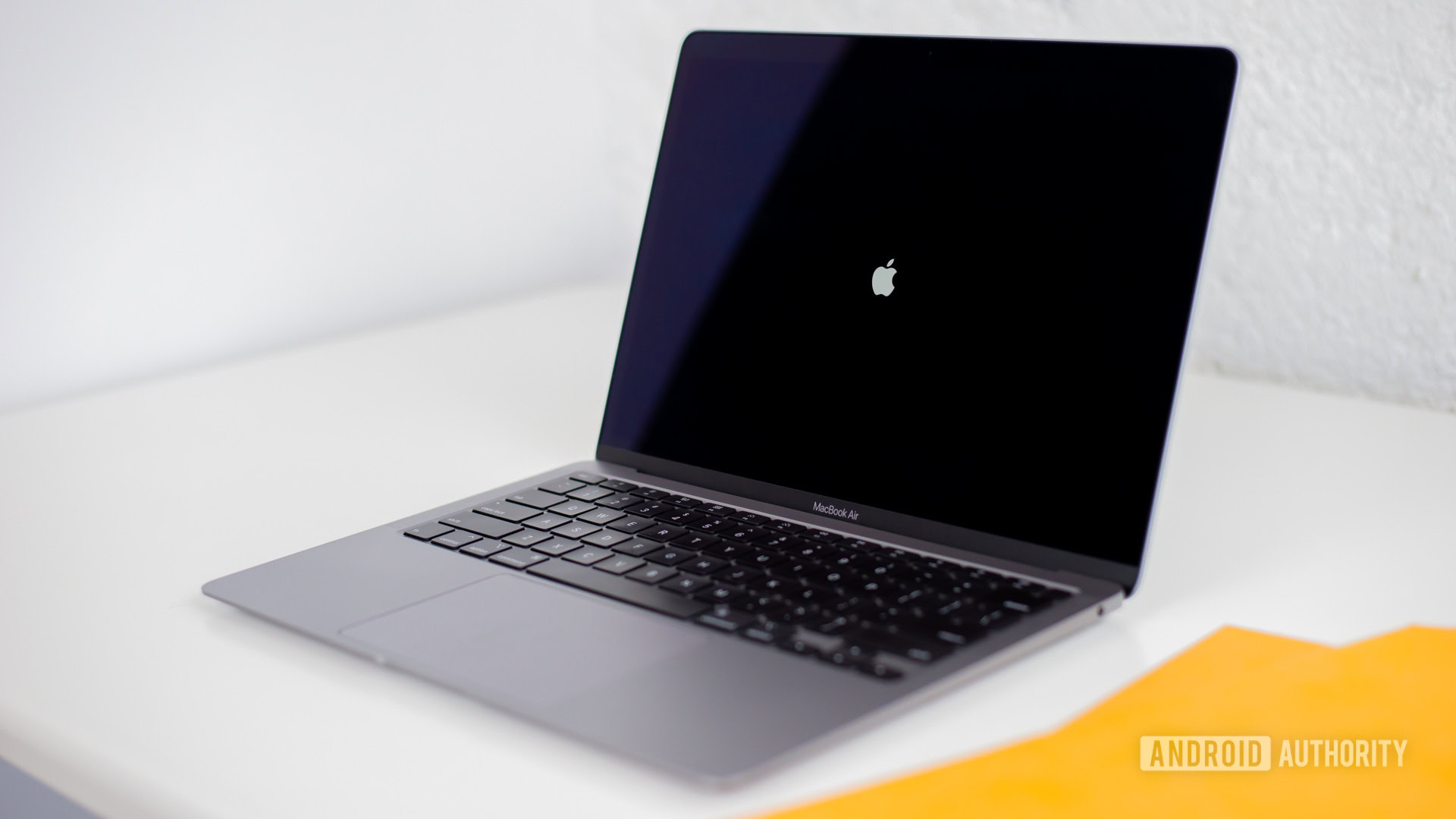
- macOS Catalina
- Version 10.15.4
While I am no huge fan of macOS, I’m also not against it. It has its pros and cons, like any operating system. Users swear by it, and I can see why. Apple’s macOS Catalina is smooth, clean, simple to use, and very well optimized for its hardware. This could be a reason why the MacBook Air can perform so well with an Intel Core i3 processor. Apple laptops simply utilize their resources more efficiently.
It’s the smaller things that make a difference. Uninstalling an app is done by grabbing the icon and throwing it in a trash bin. Windows’ uninstalling process is confusing and convoluted. Apple’s gesture controls are more refined than those in Windows. The settings are super easy to follow. And the Mac App Store provides an immense library of applications while also keeping your computer safer from the wild west the internet has become.
People swear by macOS, and I can see why. Edgar Cervantes
Apple’s macOS is pushed back by software availability. Gamers will be the first to notice not all titles are available for Mac. In fact, very few are. Developers prioritize Windows because it’s the most used desktop operating system. On the plus side, macOS and iOS/iPadOS work together very, very well with nearly seamless cross integration of apps and features.
Overall, if you can live without gaming and all your apps are available for Apple laptops, the macOS experience is great.
MacBook Air battery life
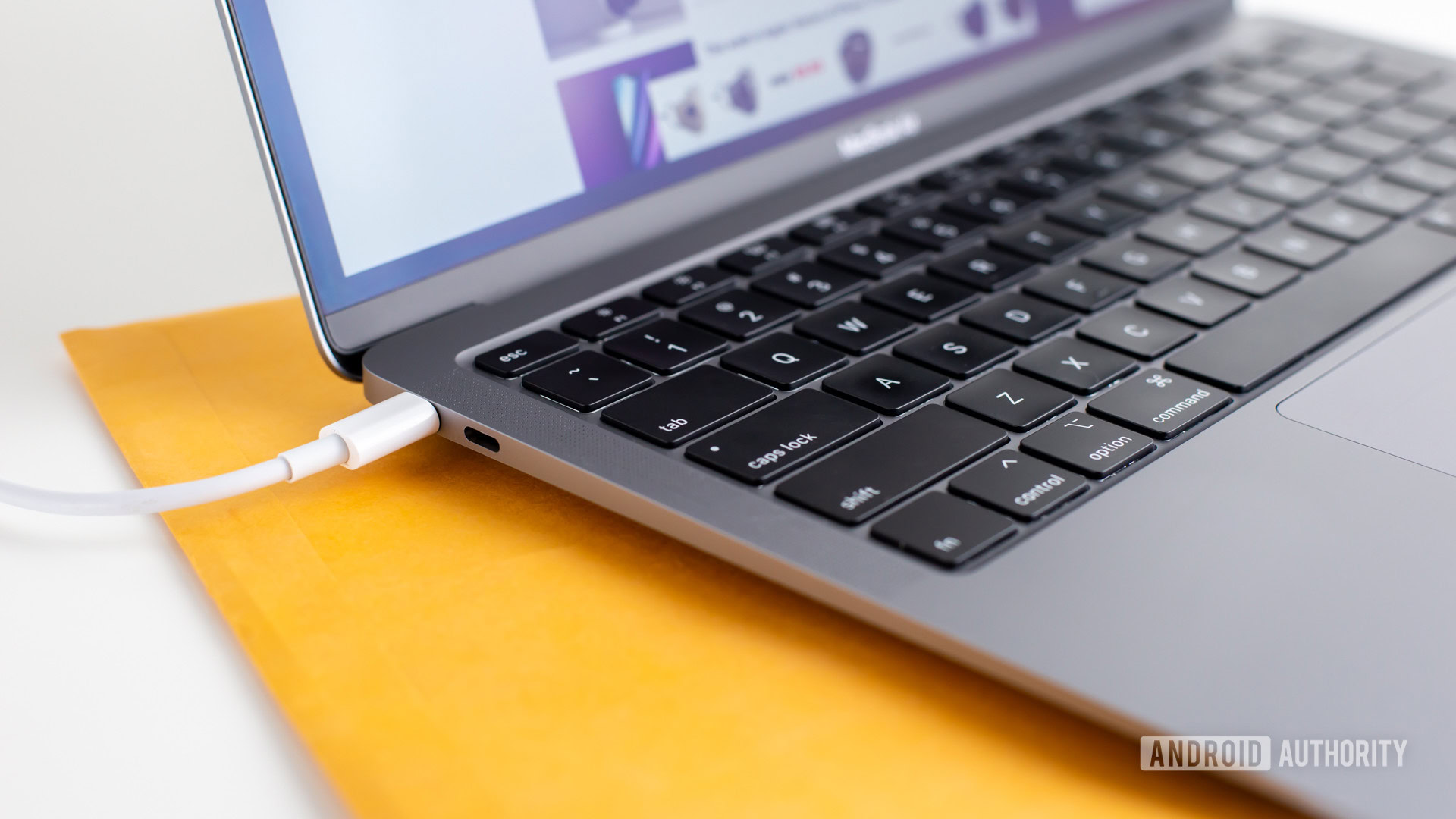
- 49.9Wh lithium polymer battery
- 30W USB Type-C charger
- 11 hours of wireless web
- 30 days of standby
Battery life is relative. Apple claims up to 11 hours of wireless web browsing on a single charge, but I’ve never been able to get even close to that. I’m lucky if I get seven hours, and usually average at around five or six. As I type this, I am at 35% and unplugged the MacBook Air 3.5 hours ago.
I don’t skimp on anything, though. My brightness is always at 100%, and so is my keyboard back lighting.
The MacBook Air's battery life is not particularly impressive by 2020 standards. Edgar Cervantes
But even if you reach those 11 hours of battery life, that is no longer outstanding. Especially when I’ve gotten more juice out of some Chromebooks and Ultrabooks. The Dell XPS 13 easily beats it at 21 hours for the FHD version, the Samsung Galaxy Book Flex can reach 20 hours, and the list goes on. This again includes the MacBook Air (M1), which can handle five hours wireless web, and up to 18 hours Apple TV app movie playback.
How is that camera?
- 720p FaceTime HD camera
The camera? It has one, which is about the most positive thing you can say about it. This 720p webcam is disappointing at best. The basic HD definition is not worthy of 2020, and the colors are hazy. This is especially annoying, because laptop manufacturers can no longer claim size is the issue. We have tiny cameras in smartphones, which can create amazing 4K video, but they can’t fit a worthy camera in a laptop?
And the audio?
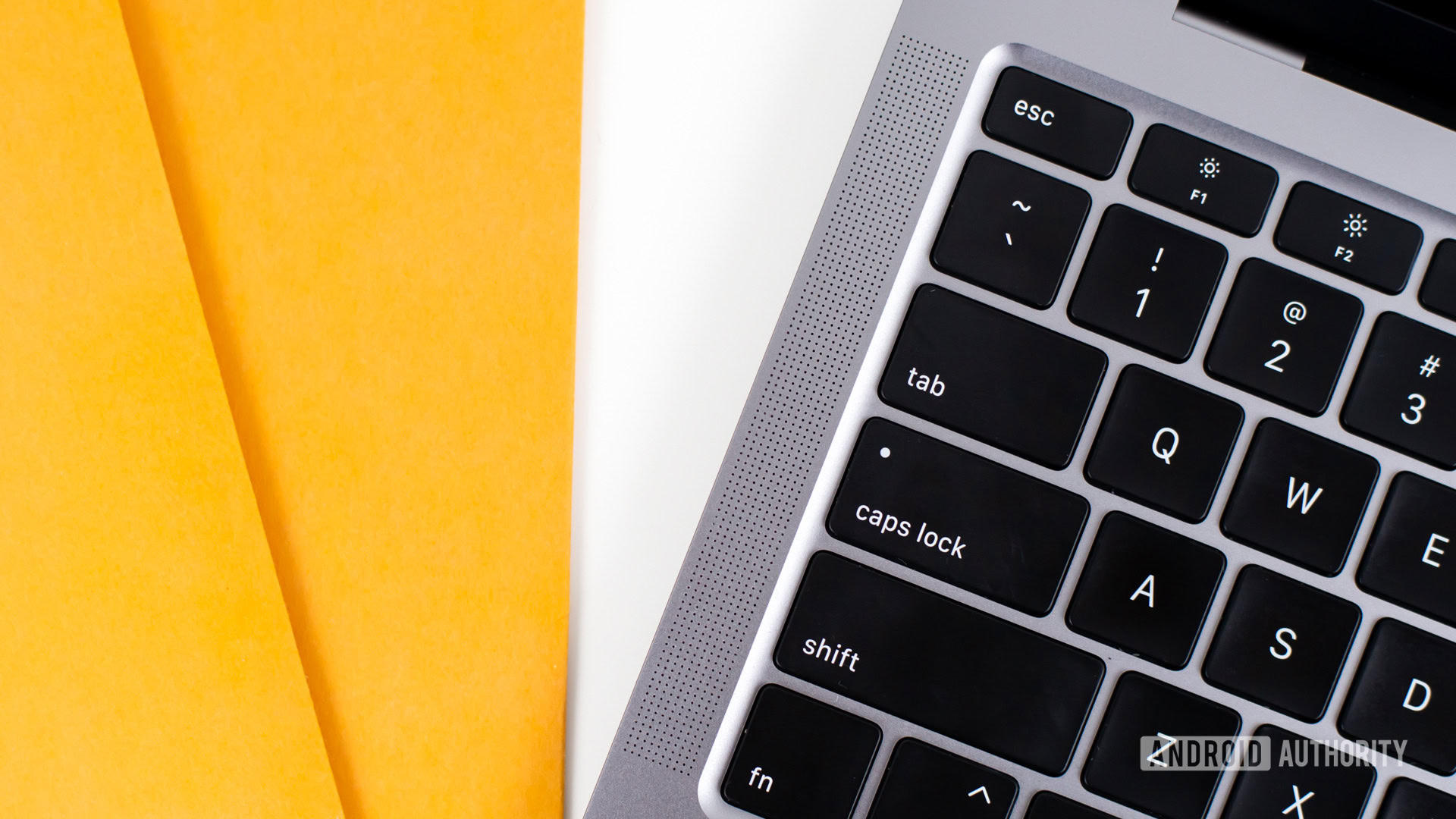
- Stereo speakers
- Wide stereo sound
- Dolby Atmos playback
- 3-mic array
The 2018 MacBook Air’s speakers were improved by adding grills to both sides of the keyboard, whereas previous MacBook Airs had the speakers right under the keyboard. The 2020 iteration follows suit and makes some improvements, including Dolby Atmos playback, something we hadn’t seen in any MacBook Air before.
I can’t say audiophiles should live with these speakers full time, but they are great for a laptop of this size and thinness. You will be able to understand sound and enjoy music clearly as long as you aren’t in a loud environment. The 3-mic array works well, and people claimed to hear me clearly in video calls.
Again, nothing to write home about in terms of audio, but everything works fairly well and you can upgrade your audio using the 3.5mm headset jack, or sacrificing one of the USB Type-C ports.
2020 Apple MacBook Air specs
| Name of smartphone | |
|---|---|
Display | 13.3-inch IPS LED 2,560 x 1,600 16:10 aspect ratio True Tone technology |
CPU | 10th generation Intel Core i3 Upgradeable up to Intel Core i7 |
GPU | Intel Iris Plus GPU eGPU supported |
RAM | 8GB Upgradeable up to 16GB |
Storage | 256GB Upgradeable up to 2TB |
Cameras | 720p Face Time HD camera |
Audio | Stereo speakers Wide stereo sound Dolby Atmos playback 3-mic array 3.5mm headset jack |
Battery | 49.9Wh lithium polymer battery |
Network | 802.11ac Wi-Fi IEEE 802.11a/b/g/n compatible Bluetooth 5.0 |
Connectivity | Two USB Type-C Thunerbolt 3 ports |
Software | macOS Catalina |
Dimensions and weight | 0.16–0.63 x 11.97 x 8.36 inches 2.8lbs |
Colors | Space Gray, Silver, and Gold |
Price and alternatives

- $999 (Intel core i3, 8GB RAM, 256GB storage)
- $1,299 (Intel Core i5, 8GB RAM, 512GB storage)
- 16GB RAM upgrade costs $200
- Intel Core i5 upgrade costs $100
- Intel Core i7 upgrade costs $250
- Storage upgrades: 512GB ($200), 1TB ($400), 2TB($800)
I’ll come out and say it: the 2020 MacBook Air isn’t cheap. Competing $999 machines have more power. If you’re going to spend $1,299 to get the Core i5 model, you might as well get a base 13-inch MacBook Pro, which has better cooling, an improved screen, and more USB Type-C ports (though you sacrifice weight and thickness).
Moreover, the price can also quickly skyrocket to $2,249 at the laptop’s max configuration, which is outrageous for a laptop of this caliber. There’s also the MacBook Air (M1) for the exact same price.
2020 Apple MacBook Air review: The verdict

While we call it a premium computer, this doesn’t mean the MacBook Air is meant to outperform its competition. Instead, the MacBook Air is for those who favor a premium experience over raw power. Because you don’t need bleeding-edge specs and discrete graphics to do spreadsheets, type emails, write essays, and browse the web. But having a simple operating system, an amazing design, a good typing experience, nice screen, fair audio, reliability, and the unbeatable customer service Apple is known for? Those benefits are worth $1,000 if you are going to be using the computer extensively.
My best advice would be to buy the 2020 MacBook Air only if you can live without many of its upgrades. Keep the price as close to $999 as possible and it will serve as a great computer. Otherwise, Apple itself has much better options, and if you’re happy to experiment with app compatibility, there’s now another MacBook Air out there that improves on this model in every other way.